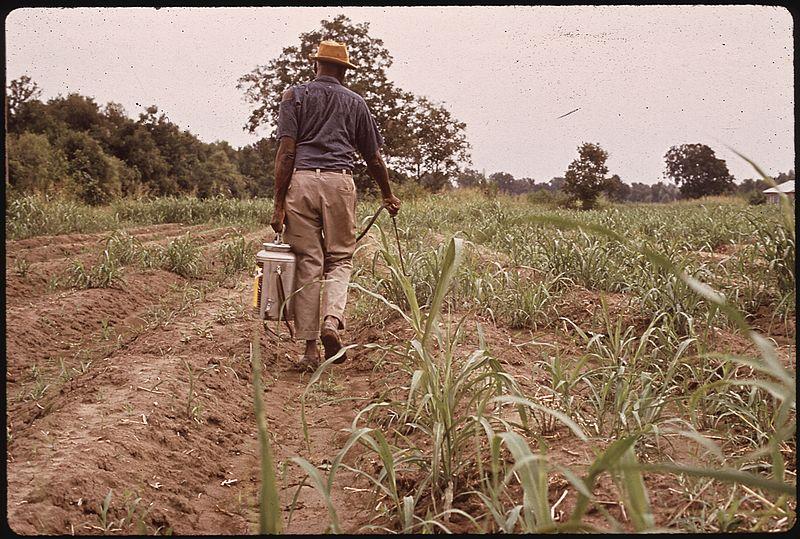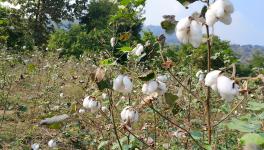India Does Not Test For Feared Carcinogen In Food

Representational Image: Courtesy Wikimedia Commons
Glyphosate has been in the news in the past few months for all the wrong reasons. In three separate verdicts in California, courts have held the herbicide responsible for causing cancer. In the latest case, the jury has awarded more than $2 billion to a couple who claimed that exposure to glyphosate triggered their cancer.
These cases mark the first time that citizens have successfully established that a chemical was responsible for causing cancer. Experts have always raised concerns about the safety of glyphosate and several other chemicals that are continuously being pumped into the food chain. However, big corporations, with their close ties to governments and mainstream media, have made sure that any research that impacts their interests remains out of the public domain.
When corporations such as Monsanto (recently bought over by the Bayer group) introduce a new pesticide into the market, the government must ensure that all the research data involved in the decision to allow this is out in the public domain. Usually, this data is kept secret and is immensely difficult to access for anyone wanting to know the safety standards of these chemicals. Why so much secrecy?
I, along with many other people, have been trying to access the data presented by Monsanto to gain approval to bring glyphosate to the Indian market, but it is simply not available in the public domain. The reason is for anyone to guess.
A Toxic History
Let us look at the history of this weedicide (chemical weed-killer) and the pattern followed by Monsanto to hide information from the public and mislead the consumers. Glyphosate was first patented by Stauffer Chemicals as a cleaner for industrial boilers and pipes in the 1960s. When Monsanto realised that it was killing all plants that it came in contact with, the company bought the patent and began to market it in the form of a weedkiller called Roundup. This became a very popular product and, by the late nineties, was being sold in 125 countries. This helped Monsanto reap huge profits.
However, the glyphosate patent was expiring in America, which meant that many generic versions would soon be available and Monsanto would lose its monopoly over the sale of Roundup. The corporation, therefore, came up with another “path-breaking idea” of producing a new kind of seed -- genetically-engineered “Roundup-ready seeds”.
What this meant was that the herbicide could be directly sprayed on genetically engineered corn, soyabean, etc. without harming the main crop. Since only Monsanto was manufacturing these seeds, farmers had no option but to buy them from this company. More than 90% of soyabean currently being sown in the US is of this genetically engineered kind.
Glyphosate, to be sold under the brand name, Roundup, was first registered in the United States (US) by Monsanto. For the registration of pesticides, American law requires that a registrant -- in this case Monsanto -- conducts health and safety tests and submits the data to the Environment Protection Agency (EPA). There are protocols and laboratory practices that must be followed for conducting these tests.
According to the petition in the Johnsons’ case in California, the EPA first classified Roundup as “possibly carcinogenic to humans” (Group C) in 1985. However, under pressure from Monsanto, and on the basis of studies that Monsanto provided to EPA, the classification changed to “evidence of non-carcinogenity in humans” (Group E) in 1991.
This is where it gets really interesting. Even though EPA changed the classification, it addended, “the designation does not mean that the chemical does not cause cancer.” Further: “It should be emphasized, however, that designation of an agent in Group E is based on the available evidence at that time of evaluation and should not be interpreted as a definitive conclusion that the agent will not be carcinogen under any circumstances.”
On two occasions, the EPA found that the laboratories used by Monsanto to conduct safety research (used to gain EPA approval) had committed fraud. EPA observed that in two of these labs, IBT and Craven labs, there was “routine falsification of data” and that “it was hard to believe the scientific integrity of the data”. The top executives of both these labs were convicted for fraud. What is absolutely shocking is that in spite of these disclosures, Monsanto was not only allowed to flourish in the US but was also marketing Roundup in at least 115 countries, including India, by the early 1990s.
Monsanto claimed that glyphosate is “practically safer than table salt” and “non-toxic” to mammals, fish and birds. It also claimed that glyphosate is “biodegradable”. In 1996, the New York District Attorney’s office filed a lawsuit against Monsanto for its false and misleading advertising of Roundup and other products. As a result, the corporation entered into an “assurance of discontinuance” with the county, which meant that it would not run ads in New York claiming that its products containing glyphosate were “non-toxic, safe, harmless or biodegradable”. Monsanto altered its advertising only in New York.
The lawyers in the last California case had also argued that internal Monsanto emails uncovered in the litigation suggested that the corporation has repeatedly worked to stifle critical research over the years while funding “ghost writers” to publish scientific reports favourable to glyphosate. Nevertheless, Monsanto continues to sell Roundup, touting it as safe for humans and the environment. In 2009, the highest court of France ruled that Monsanto had not been truthful in its advertisement about the safety of glyphosate.
The United Nations (UN)-appointed body, the International Agency for Research on Cancer (IARC), has an extensive procedure to review and classify chemicals. In 2015, it reviewed glyphosate after analysing hundreds of studies from all over the world. IARC classified glyphosate as 2A, which means that it is “probably carcinogenic” to humans.
The IARC working group concluded that cancers most associated with glyphosate exposure are Non-Hodgkin’s lymphoma and other hematopoietic cancers, including lymphoma and multiple myeloma. IARC also noted that glyphosate produces genotoxic, enzymatic and hormonal effects in mammals, including human beings.
Over the years, several countries have tried to ban glyphosate. There is a complete ban in the Netherlands, while France has proscribed its private sale. Sri Lanka imposed a ban in 2014 due to an increase in kidney failure cases among agricultural workers. However, it then partially lifted the ban and limited use of glyphosate is now allowed in tea plantations. There are proposals to ban or restrict sales in Argentina, Brazil, Columbia and a number of other countries, especially after the 2015 classification of IARC. Recently, Germany announced it has plans to phase out Glyphosate by 2023. This is the reason why Monsanto has been using all its might in the California cases.
Apathy and Inaction in India
Though glyphosate is approved only for tea plantations and non-crop areas in India, there are reports of its being used for many crops because farmers find it far more economical than manual weeding. India is a large market for the agrochemical industry. According to industry reports, herbicides are the fastest growing agrochemical in the country. They are currently being sold by Monsanto and several other companies including Pesticides India, Dow, Excel, etc.
The glyphosate story is an epitome of our broken pesticide and herbicide regulatory framework. In spite of continued deaths of farmers due to pesticide poisoning, India allows the sale of several chemicals classified by UN-mandated bodies as carcinogenic. It currently does not have any standards for the Maximum Residue Limit (MRL) for glyphosate. India does not test for glyphosate residue in food items because it does not have any standards for testing either.
The Indian government put out a draft notification on December 27, 2017, according to which the MRL was set at 1 mg/kg, 0.01 mg/kg and 0.05 mg/kg for tea, rice, meat and meat products, respectively. The final notification is yet to be issued.
Last year, there were reports of “high levels” of glyphosate in imported pulses. The Food Safety and Standards Authority of India (FSSAI) has stated that since India does not have any set standards for maximum residual limits for glyphosate, it may use the standards set by Codex Alimentarius, a joint committee set up by the World Health Organization (WHO) and Food and Agriculture Organisation (FAO). These standards allow MRL of 2 mg/kg in beans and 5 mg/kg for lentils and peas. These are much higher than the ones indicated in the government’s draft notification of 2017.
There has been growing concern in India over the use of Glyphosate. A number of states like Telangana, Maharashtra, Punjab, Kerala have tried to restrict the sale. However, under the current Insecticides Act, the states have limited powers to restrict/ban any pesticides/herbicide that has been approved by the Union Government. The question of Glyphosate safety was also raised in Parliament. Even Swadeshi Jagran Manch, an RSS-affiliated body, has raised a strong voice over glyphosate, However, there has been no action by the Union government.
There are more than 13,000 cases pending against glyphosate worldwide, in which petitioners claim that exposure to the herbicide has resulted in severe illnesses including cancer. It is time consumers in India start asking serious questions about the safety of our food.
Unless we raise a strong, unified voice, the corporate-government nexus that only cares about the bottomline will continue to exploit the system in some avatar or the other: the hydra-like Monsanto, for instance, is now Bayer.
India does not have any independent mechanism to study the long- term impact of these pesticides on human health. However, there is enough scientific evidence available from reputed international research organisations for the government to cancel the sale of glyphosate in India, before we are hit by another public health crisis.
Reena Gupta is an environment specialist who has worked with government and non-government organisations, including the World Bank. The views are personal.
Get the latest reports & analysis with people's perspective on Protests, movements & deep analytical videos, discussions of the current affairs in your Telegram app. Subscribe to NewsClick's Telegram channel & get Real-Time updates on stories, as they get published on our website.















